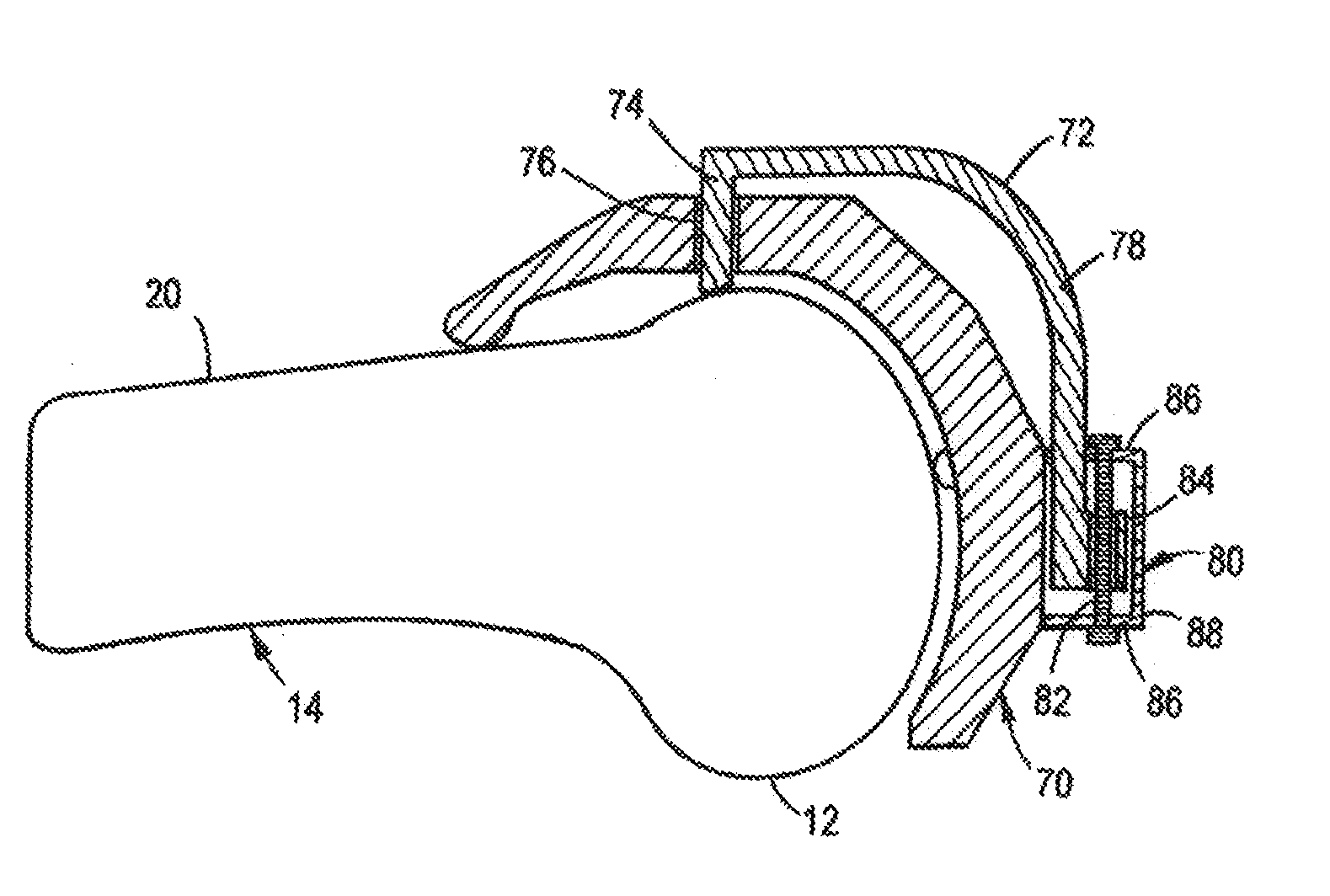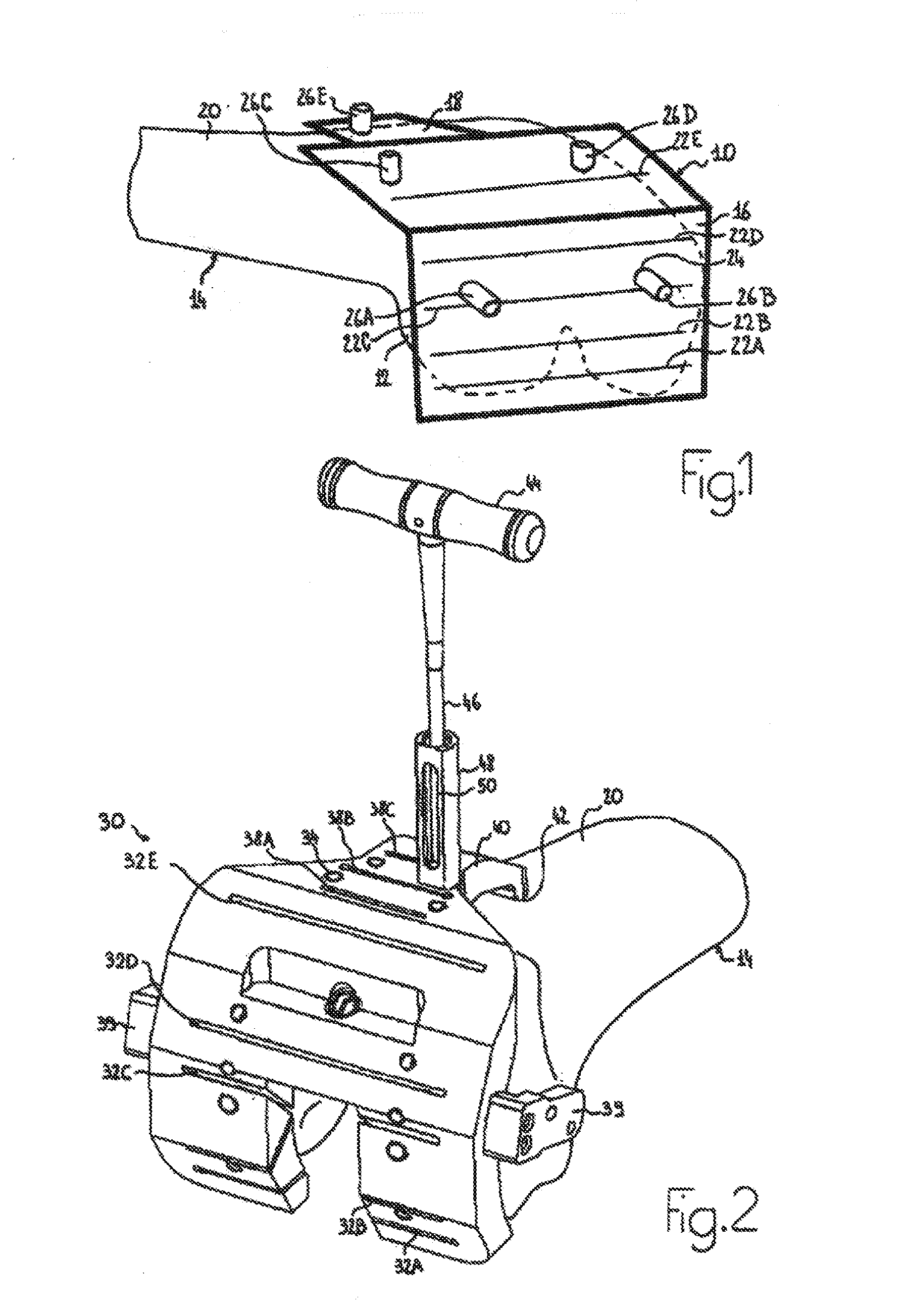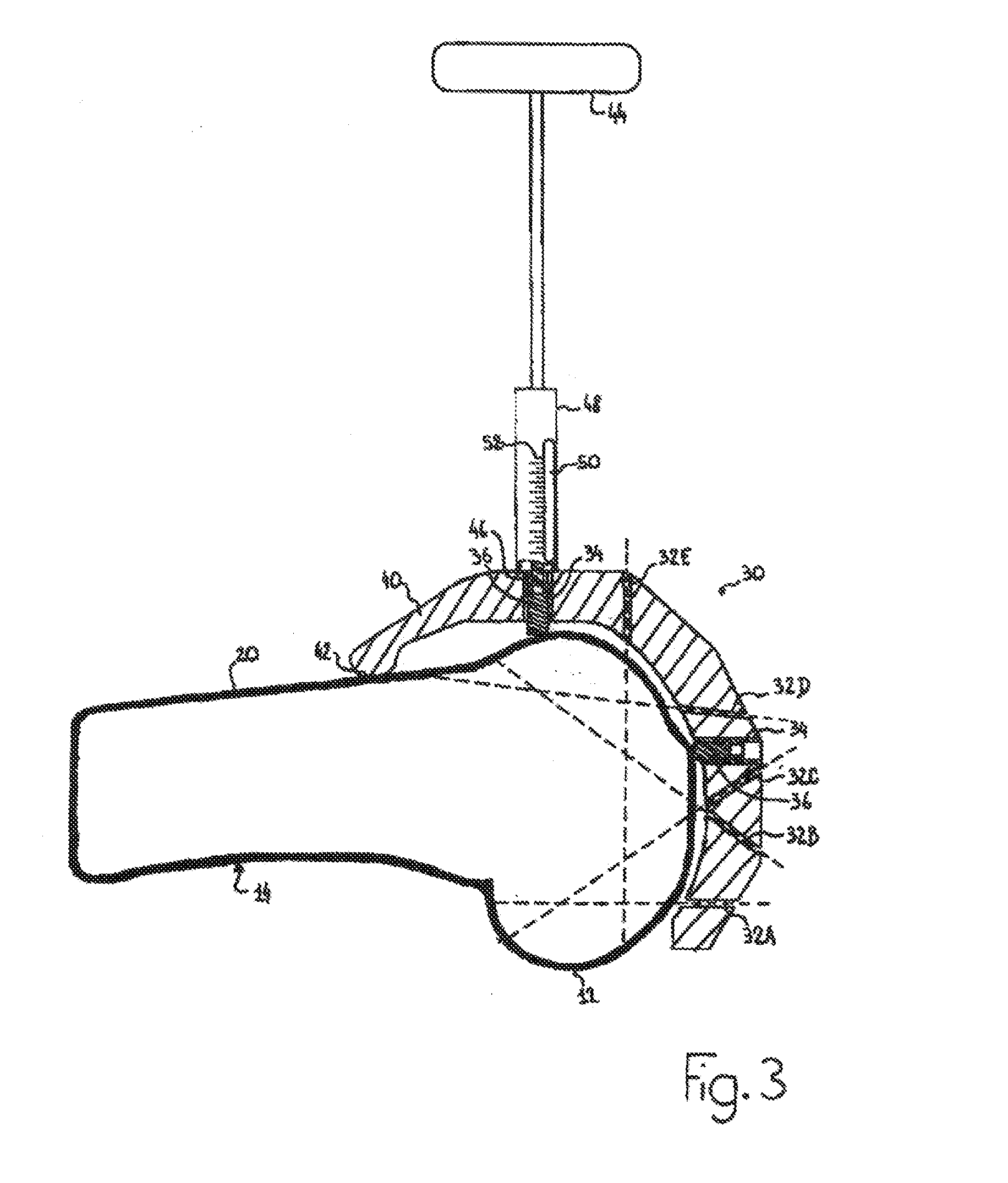Device for positioning a bone cutting guide
a technology for positioning devices and cutting guides, which is applied in the field of devices for positioning cutting guides, can solve the problems of invasiveness for patients, unnecessary damage to the bone, and the size of devices in the vicinity of the bone,
- Summary
- Abstract
- Description
- Claims
- Application Information
AI Technical Summary
Benefits of technology
Problems solved by technology
Method used
Image
Examples
second embodiment
[0043]In the present invention, the contact between the cutting guide and the bone is shared between at least 2 adjustable bone contact surfaces and at least one non adjustable contact surface which is integral to or rigidly fixed to the cutting guide. In this embodiment, the system provides at least one mechanical constraint to assure that the guide is positioned in a specific manner with respect to the bone. This positioning constraint preferably complies with some surgical criteria, such as, for example, preventing notching of the anterior femoral cut, or specifying a fixed cutting depth as referenced from one of the distal condyles at the end of the bone. Optionally, additional mechanical constraints can be provided to stabilize the cutting guide relative to the bone.
[0044]FIGS. 2 and 3 show an example of a cutting guide 30 according to such a second embodiment, still in relation to knee replacement surgery. In contrast with the first embodiment, the guide positioning system doe...
third embodiment
[0058]the present invention will now be described wherein at least some of the adjustment screws are attached to an intermediate member which is temporarily fixed to the cutting guide.
[0059]FIG. 6 shows such an intermediate member 90 which comprises four threaded holes 92 receiving four screws 94A-94D. This intermediate member 90 is adapted to cooperate with a cutting guide, not shown on FIG. 6, having the general shape illustrated on FIG. 1 or 2. The intermediate member 90 includes a hole 96 to be located opposite to a threaded hole of the cutting guide in order to fix the intermediate member 90 to the cutting guide by use of a screw. As an alternative, the intermediate member comprises a quick release clip cooperating with a corresponding clip provided on the cutting guide so that the intermediate member can be quickly removed after the cutting guide is positioned and fixed to the bone. The intermediate member 90 includes an extending portion 98 for attaching a rigid body, not sho...
fourth embodiment
[0062]FIG. 8 shows a cutting guide 110 aimed to be positioned at the end of a tibia or a femur, for making a single cut such as the proximal tibial cut or the distal femoral cut. Such a cutting guide comprises a parallelepiped body 112 which includes at least one cutting surface or slot, not shown, for the realization of at least the single cut. The cutting guide 110 includes two curved arms 114A, 114B. A curved arm 114A, 114B continues with a cylindrical portion 116A, 116B of parallel axis, the tip of which corresponds to a contact surface 117A, 117B. The displacement of an arm 114A, 114B along the direction of the axis of the cylindrical portion 116A, 116B is obtained by means of an actuation mechanism 118A, 118B similar to the translational and rotational actuation mechanisms previously described above. The cutting guide 110 also includes a threaded hole 120 receiving a screw 122 the tip of which corresponds to a contact surface 124. The actuation of the screw 122 and the actuati...
PUM
 Login to View More
Login to View More Abstract
Description
Claims
Application Information
 Login to View More
Login to View More - R&D
- Intellectual Property
- Life Sciences
- Materials
- Tech Scout
- Unparalleled Data Quality
- Higher Quality Content
- 60% Fewer Hallucinations
Browse by: Latest US Patents, China's latest patents, Technical Efficacy Thesaurus, Application Domain, Technology Topic, Popular Technical Reports.
© 2025 PatSnap. All rights reserved.Legal|Privacy policy|Modern Slavery Act Transparency Statement|Sitemap|About US| Contact US: help@patsnap.com



